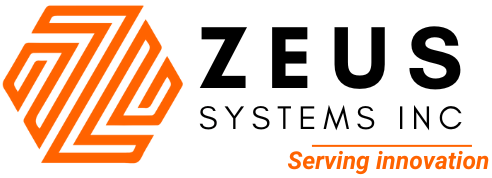In the realm of artificial intelligence, few developments have captured the imagination quite like OpenAI’s ChatGPT. Wit ...
Categories
Post By Date
- November 2025
- October 2025
- September 2025
- August 2025
- July 2025
- June 2025
- May 2025
- April 2025
- March 2025
- February 2025
- January 2025
- December 2024
- November 2024
- October 2024
- September 2024
- August 2024
- July 2024
- June 2024
- April 2024
- March 2024
- February 2024
- January 2024
- December 2023
- November 2023
- October 2023
- September 2023
- August 2023
- July 2023
- June 2023
- May 2023
-
Trends in Cloud Technology
In the realm of technological innovation, cloud technology continues to evolve, captivating hearts and minds alike. With ...
What is Chat-GPT and How powerful it is?
the conversational companion that brings a touch of humanity to our digital interactions. What is Chat GPT?A Conversa ...
3D Mapping using Drones
A journey to the 3D mapping using drones. The latest trend in 3D mapping using drones revolves around enhanced precis ...
-
Circular Economy Platforms Using IoT:
As the world pivots toward a more sustainable future, the concept of the Circular Economy (CE) has emerged as a critica ...
Additive Manufacturing Meets Time: The N...
Additive manufacturing (AM), or 3D printing, revolutionized how we build physical objects—layer by layer, on demand, wi ...
AI-Driven Financial Regulation: How Pred...
In today’s era of digital transformation, the regulatory landscape for financial services is undergoing one of its most ...
Space Tourism Research Platforms: How Co...
Introduction: Space Tourism’s Hidden Role as Research Infrastructure The conversation about space tourism has largel ...

- Zeus
- July 31, 2023
- 2 years ago
- 4:26 pm
The landscape of software development is undergoing a transformative shift, and it’s not solely driven by advancements in programming languages or frameworks. Instead, the rise of low-code and no-code development approaches is democratizing the software development process, changing the demography of those involved in creating applications. These innovative methodologies empower individuals from diverse backgrounds and skillsets to actively participate in application development, fueling unprecedented creativity, agility, and inclusivity within the software industry.
The Emergence of Low-Code and No-Code Platforms
Low-code and no-code platforms emerged as a response to the growing demand for faster and more accessible application development solutions. Traditional software development required extensive coding knowledge, limiting participation to highly skilled programmers. However, the complexity and time-consuming nature of coding often created bottlenecks, hindering the realization of innovative ideas in a timely manner.
Low-code platforms were the first step towards simplifying application development. These platforms provided visual interfaces, pre-built components, and integrations that significantly reduced the need for manual coding. Professional developers could now build applications more efficiently, accelerating the software development lifecycle.
Soon after, no-code platforms took the simplification process to the next level. With no-code platforms, non-technical individuals, often referred to as citizen developers, could create applications without writing a single line of code. By relying on visual development tools and configurations, no-code platforms opened the doors of application development to business analysts, marketers, and other non-technical roles.
The Impact on Software Development Demography
- Inclusion and Diversity: The advent of low-code and no-code platforms has brought inclusivity to the forefront of software development. By enabling individuals from diverse backgrounds, including those without formal programming training, to actively participate in the process, the demography of software development is becoming more diverse. As a result, applications are now better suited to meet the needs of a broader user base, taking into account different perspectives and use cases.
- Empowerment of Citizen Developers: The rise of no-code development has empowered citizen developers to unleash their creativity and ideas, leading to the emergence of a new breed of application creators. Professionals from various departments, such as marketing, operations, and sales, are no longer limited to just using off-the-shelf software but can create tailor-made solutions that precisely match their unique requirements.
- Accelerated Innovation: Low-code and no-code platforms have accelerated the pace of innovation in the software industry. With faster application development cycles, organizations can quickly prototype and iterate on ideas, leading to more experimentation and groundbreaking solutions. Additionally, citizen developers can rapidly address departmental needs without waiting for scarce developer resources, boosting overall productivity.
The Future of Software Development
The proliferation of low-code and no-code platforms is not just a passing trend; it represents a paradigm shift in how software development will evolve in the future. As these approaches continue to mature, several key trends are likely to shape the future of the software development demography:
- Hybrid Development Teams: We can expect to see more hybrid development teams comprising both professional developers and citizen developers. The collaboration between these two groups will foster cross-functional knowledge exchange, leading to more innovative and comprehensive solutions.
- Enhanced Low-Code and No-Code Capabilities: Low-code and no-code platforms will continue to advance, offering more sophisticated features and capabilities. As these platforms become more robust, they will be better equipped to handle complex projects, further reducing the need for extensive custom coding.
- AI Integration: Artificial Intelligence (AI) will play a crucial role in augmenting low-code and no-code development. AI-powered tools can analyze user behavior and requirements, suggest optimal solutions, and automate certain aspects of the development process, making it even more accessible and efficient.
The rise of low-code and no-code approaches is reshaping the software development landscape, transforming it into a more inclusive and diverse environment. These methodologies are breaking down barriers, empowering individuals from all walks of life to participate in the creation of applications, and driving accelerated innovation. As the capabilities of low-code and no-code platforms continue to evolve, we can expect to witness an exciting future of software development, where creativity and problem-solving know no boundaries.

